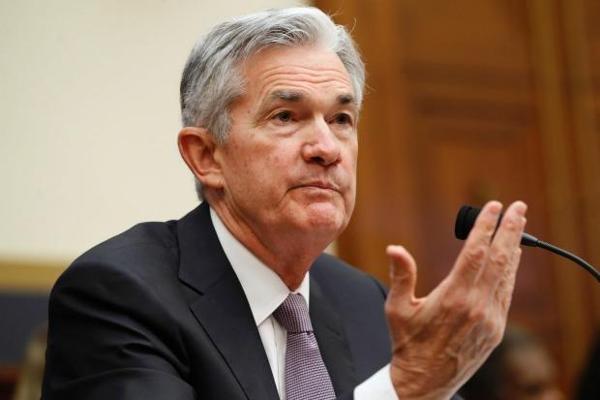Dollar builds on 3-week high after Powell testimony
LONDON/ WASHINGTON - Reuters


The dollar hit a three-week high on Feb. 28 after an upbeat assessment of the U.S. economy by Federal Reserve Chairman Jerome Powell’s boosted bets on more interest rate hikes, while the euro edged lower before inflation data.
Against a basket of currencies, the dollar rose 0.2 percent after a 0.6 percent rise on Feb. 27 that followed Powell’s testimony to U.S. lawmakers, which encouraged some investors to believe the Fed would raise rates four times this year rather than three.
At 90.539, the dollar index on Feb. 28 hit its highest level since Feb. 9.
The dollar has pulled itself from three-year lows hit on Feb. 16 on the back of rising U.S. Treasury yields and investors viewing the currency as oversold. But the jury is still out on whether the dollar is enjoying only a temporary bounce amid a prolonged period of weakness.
“The long-term risks of an expansionary monetary policy in times of a robust economy, which Powell mentioned briefly and that put pressure on the dollar only a few days ago, were now pushed aside by the market,” Commerzbank said.
Analysts at the Frankfurt-based bank said that if U.S. economic data due this week was positive, the dollar could push to the area of $1.2180 to $1.2220 versus the euro.
The euro traded down 0.2 percent $1.2207 ahead of core inflation data for February due at 10:00 GMT.
Powell, in his first public appearance as head of the Fed, vowed on Feb. 27 to prevent the economy from overheating while sticking with a plan to gradually raise interest rates.
Testifying before the U.S. House of Representatives’ Financial Services Committee, Powell acknowledged the economy had strengthened recently, a remark that prompted investors to increase bets on four rate increases in 2018.
The Fed’s last round of economic projections in December pointed to three rate increases this year.
Powell’s overall tone, however, was one of continuity, as he told lawmakers the Fed would balance the need to guard against excessive inflation with the benefits of allowing the economy to enjoy the “tailwinds” of tax cuts and strong global growth.
He said the Fed was in a “process of discovering” how low unemployment could fall before inflation took hold. The U.S. unemployment rate is at a 17-year low of 4.1 percent.
“The [Federal Open Market Committee] will continue to strike a balance between avoiding an overheating economy and bringing ... price inflation to 2 percent on a sustained basis,” Powell said.
“Some of the headwinds the U.S. economy faced in previous years have turned into tailwinds,” he added, noting recent fiscal policy shifts and a global economic recovery. Still, “inflation remains below our 2 percent longer-run objective. In the (FOMC’s) view, further gradual rate increases in the federal funds rate will best promote attainment of both of our objectives.”
The testimony was Powell’s first signal as Fed chief that the Trump administration’s massive tax overhaul and spending plans will not prompt any dramatic shifts in Fed policy. “Gradual” has been the operative word used by the central bank since it began raising rates under Powell’s predecessor, Janet Yellen, in late 2015.
The Fed is expected to push through its first rate increase of 2018 at its next policy meeting in March, when it will also provide fresh economic projections and Powell will hold his first press conference.
